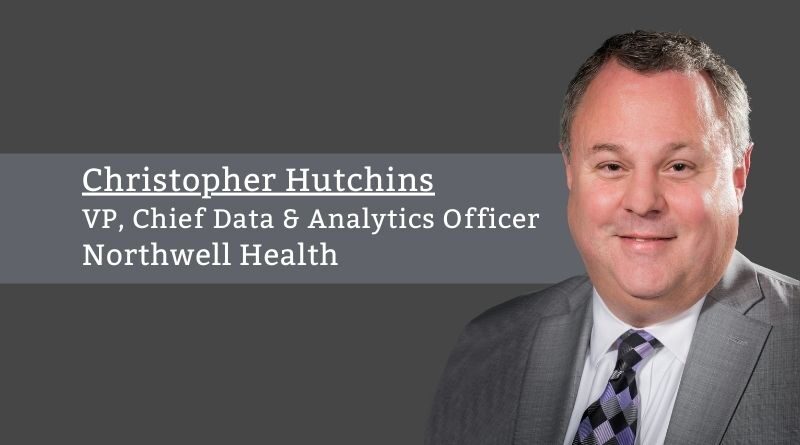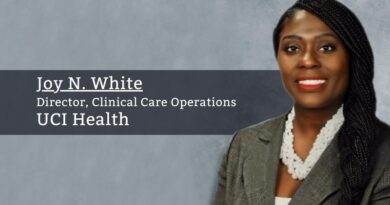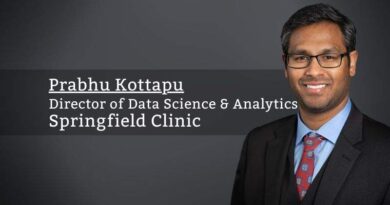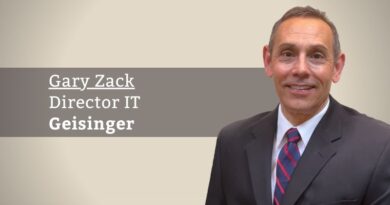The Evolving Role of Analytics in Healthcare
By Christopher Hutchins, VP, Chief Data & Analytics Officer, Northwell Health
Today we are experiencing unprecedented growth in the generation of data of every kind. This is certainly true in healthcare, and with the introduction of artificial intelligence, machine learning, and powerful new tools for data processing and visualization, the possibilities seemingly have no limit. There are numerous ways that analytics are being used to support health systems in every aspect of operations. Consider the multiple disciplines and specialties of clinical care that each take career level focus. Oncology is one example where clinicians specialize in treating very specific types of cancer. Internal Medicine is another with specialties like Endocrinology, Infectious Disease, Gastroenterology, and many others. This pattern also exists in administrative, financial, and operational functions. The disciplines within these areas are not interchangeable, and all are required to provide the full range of services in a successful healthcare organization. Within each of these areas, there are also leaders and staff who monitor, understand, analyze, and respond to data that are generated to support the functions within their purview. For example, by analyzing admission patterns, it is possible to forecast staffing demands. If supply chain data can be integrated, it is possible to include associated forecasts for required protective equipment. These types of models can enable much better visibility and planning capability for operations at nearly every level with additional inputs such as service mix or revenue associated with the admissions. While there are multiple factors and variants to account for, these models will continue to evolve and can be enhanced with more inputs. Strategic planning is now more data-driven than ever before. In addition to the data sets already mentioned, the addition of data from social media, clinical history, census, geospatial data, and countless others are improving the ability to understand people’s motivations. It helps to plan more targeted strategies that cater to specific communities even down to the level of neighborhoods and streets.
Strategic planning is now more data-driven than ever before.
The role of analytics is particularly evident in the midst of the current crisis. Emergency operations ercenters use analytics to monitor call volumes, occupancy rates, staffing, and load balancing, and multiple other data points to enable coordination of critical activities. Some of these activities include coordination of transfers and dispatching of emergency response vehicles based on the visibility of capacity within a region or organization. This along with other key indicators are used to inform placement and staging of these vehicles for rapid response. Analytics are also being used to understand patterns in numerous large data sets that enable predictive models. These models are designed to anticipate demand for emergency services, hospital beds, ventilators, personal protective equipment, and staffing levels and ultimately support operations ercenter coordination.
Population health management and patient engagement programs are already leveraging and advancing analytic capabilities. Bringing data from electronic medical records together with claims and scheduling data is enabling improvements to care coordination. Having a view of this data in analytic outputs aids in identifying when a patient is due for various kinds of screenings, lab testing, or follow-up care. Analytics is also used to measure patient engagement and satisfaction as well as monitoring outcomes. This allows the refining of care models as well as financial models. The incorporation of wearables is enhancing communication between patients and care teams and enabling alerts. The data generated by these and other devices feed a data stream that can aid in personalized care planning and development of programs to improve public health. For example, if a patient’s blood pressure increases alarmingly, the wearable will send an alert in real-time to the doctor who will then take action to reach the patient and administer measures to lower the pressure. Data from glucometers provides similar capability based on glucose readings. Advancement of these technologies will continue to enhance the monitoring of health data and, in many cases, reduce the need for hospital stays. With increasing interest and use of wearable devices to record heart rates, sleeping habits, step counts, and even geospatial data, it is increasingly possible to identify health risks much faster than ever before. While getting patients directly involved in the monitoring of their own health is a clear benefit, there are numerous other ways this data can be used. Through the use of cloud technology, these data streams can be used to better understand the health of the general public, which will allow doctors to compare this data in socioeconomic context and modify their delivery strategies accordingly.
Artificial Intelligence is also being used to assist with decision support as models continue to be trained with growing volumes of relevant data to amplify key insights. These capabilities can also identify opportunities for Robotic Process Automation (RPA) based on patterns that may not be easily visible due to the size of data needing to being processed. Relatedly, chatbots are also being used in various workflows and also generate additional discreet data elements that can enhance data sets with timely feedback from patients or members of care teams. These are also potential inputs for machine learning and care models. Rapid processing of data and training of these models should continue to provide more and more valuable insights to aid in clinical decision making at the point of care. As the ability to apply these technologies and methods advance, there are countless possibilities. Researchers and data scientists aided by these tools are already completing advanced studies faster than ever before. Now, with technology that can generate models and run multiple simulations concurrently, I believe that the decade ahead will see discoveries and breakthroughs that today we can only dream.



